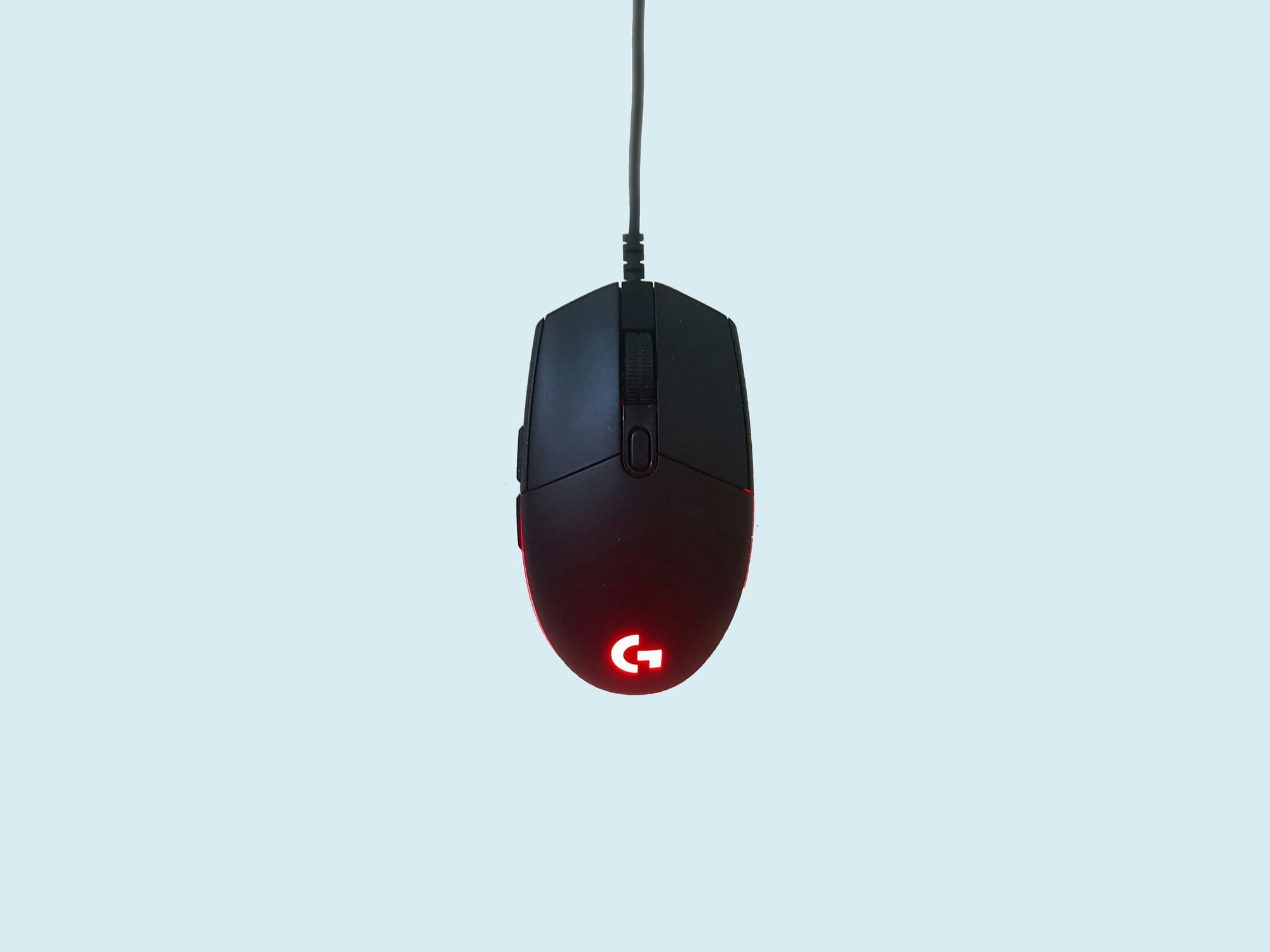What To Look For When Buying A Computer Mouse
When buying a computer mouse, consider key factors like ergonomics, DPI sensitivity, polling rate, sensor accuracy, connectivity options (wired, wireless, or Bluetooth), and compatibility with your specific needs, whether for coding, productivity, or gaming.

Choosing the right computer mouse might seem straightforward, but it’s a decision that can significantly impact your productivity, comfort, and performance. Whether you’re a coder, a productivity worker, or a gamer, different requirements mean different features to consider. A mouse isn’t just a simple tool anymore; advancements in technology have turned it into a sophisticated accessory tailored for various applications. This article dives into the essentials of selecting the perfect mouse, covering key features such as ergonomics, DPI, polling rate, sensor accuracy, and connectivity options like wired and wireless mice.
Why the Right Mouse Matters
The importance of selecting the right mouse boils down to your specific use case:
- Coders: Need precision, comfort, and customisation options to endure long hours of programming.
- Productivity Workers: Value ergonomics and ease of navigation for multitasking across apps.
- Gamers: Demand responsiveness and accuracy to enhance in-game performance.
Mouse Features and What They Mean
Let’s break down the technical aspects of a mouse that you’ll need to understand before making a purchase.
1. Ergonomics: Comfort Over Long Hours
One of the most important features in a computer mouse is its ergonomics. A poorly designed mouse can lead to hand fatigue, wrist pain, or even long-term repetitive strain injuries. Ergonomics ensure that the mouse fits comfortably in your hand and supports your natural posture, making it ideal for extended usage.
Types of Ergonomic Designs:
- Ambidextrous Mice: These are symmetrical and cater to both left- and right-handed users, often preferred by gamers for their versatile design. Logitech G Pro is a popular choice for gamers due to its ambidextrous shape.
- Palm Grip Mice: Larger mice that allow your entire hand to rest on them for better support, ideal for productivity workers. Microsoft Surface Precision Mouse offers excellent palm support and productivity features.
- Claw Grip and Fingertip Grip Mice: Smaller mice suited for users who prefer precise control with their fingertips. Gamers often favor these for fast movements. Razer Viper Mini is lightweight and ideal for claw grip users.
For coders, choosing a mouse with good palm support is essential to prevent discomfort during long programming sessions. Productivity workers can benefit from ergonomic mice equipped with customisable buttons, which streamline multitasking and improve workflow efficiency. Meanwhile, gamers should prioritize lightweight designs that allow for swift movements and precise control, enhancing their overall performance during fast-paced gaming scenario
2. DPI (Dots Per Inch): Sensitivity Adjustments
DPI determines how sensitive a mouse is to movement. A higher DPI means the cursor moves farther with less physical movement, which is useful for tasks requiring speed and precision.
Why DPI Matters:
- Low DPI: Suitable for tasks that need fine control, like graphic design or precision gaming.
- High DPI: Ideal for rapid movements in high-paced gaming scenarios and general productivity tasks.
- Adjustable DPI Settings: Many mice allow you to change DPI settings to fit different tasks.
Coders can benefit from adjustable DPI settings, enabling seamless transitions between coding tasks and user interface navigation for enhanced precision. Productivity workers are best suited to medium DPI settings, typically ranging from 800 to 1200 DPI, offering balanced control for efficient multitasking. Gamers, on the other hand, find specific DPI ranges critical to their performance—competitive FPS players often opt for lower DPI for precise aiming, while those engaging in action-packed games may prefer higher DPI settings to accommodate rapid movements and dynamic gameplay.
3. Polling Rate: How Fast the Mouse Communicates with Your Computer
Polling rate measures how often the mouse sends signals to your computer, measured in Hz (e.g., 125 Hz, 500 Hz, 1000 Hz). A higher polling rate means smoother and more responsive cursor movement.
Why Polling Rate Matters:
- Gamers: Polling rate is crucial for competitive gaming, where quick reactions can make all the difference. A polling rate of 1000 Hz or higher is often preferred.
- Productivity Workers: While polling rate isn’t as critical, smoother navigation between apps can benefit workflow.
- Coders: Stability over responsiveness is key, so a moderate polling rate is sufficient.
The Razer DeathAdder V3 stands out as a gaming mouse with an impressive 1000 Hz polling rate, making it an excellent choice for FPS gaming, where rapid response times and precision are paramount. On the other hand, the Logitech MX Master is a productivity-focused mouse that prioritizes smooth navigation and ergonomic comfort over high polling rates, making it ideal for multitasking and prolonged use in professional settings. Both mice cater to specific needs, ensuring optimal performance for their respective users—gamers and productivity workers alike.
4. Sensor Accuracy: Precision at Its Best
A mouse sensor determines how accurately the device detects movement. Sensors can be optical or laser, and their accuracy often depends on tracking speed and resolution.
Types of Sensors:
- Optical Sensors: More common in modern mice; they provide excellent tracking on non-reflective surfaces.
- Laser Sensors: Can work on a variety of surfaces but sometimes sacrifice precision.
For coders, optical sensors offer smooth and precise navigation, making them ideal for working across Integrated Development Environments (IDEs) with consistent accuracy. Productivity workers, on the other hand, may benefit from laser sensors, which function effectively on a variety of surfaces and accommodate frequent transitions between different workspaces. Gamers typically prefer optical sensors due to their superior precision and responsiveness, enabling accurate movements essential for competitive gameplay and immersive experiences. Together, the right sensor choice caters to the unique demands of each user group, ensuring optimal performance and efficiency.
5. Wired vs Wireless: Choosing the Right Connection
The debate between wired and wireless mice boils down to convenience and performance. Here's how they stack up:
Wired Mice:
As the name suggests, it is connected to the computer via a wire.
- Advantages:
- Reliable connection with minimal latency.
- No need to worry about battery life.
- Disadvantages:
- Limited mobility due to cables.
- Can clutter workspace.

Wireless Mice:
Wireless mice can connect via a dongle (using RF signals) or Bluetooth.
- Dongle Connection:
- Advantages: Offers low latency, often comparable to wired mice. Perfect for gaming and productivity.
- Example: Logitech G305 offers dongle-based wireless performance with no perceptible lag.
- Disadvantages: Requires an available USB port; dongle can be misplaced.
- Bluetooth Connection:
- Advantages: No need for a dedicated port; compatible with most modern devices.
- Example: Microsoft Bluetooth Ergonomic Mouse is a solid choice for productivity workers.
- Disadvantages: Higher latency compared to dongle-based wireless mice.
For coders, wireless Bluetooth mice offer a clutter-free workspace, enhancing organisation and mobility, while wired mice ensure stable and consistent performance for precise tasks. Productivity workers benefit from Bluetooth mice due to their convenience in multitasking across multiple devices, providing seamless connectivity and efficiency. Meanwhile, gamers find dongle-based wireless mice to be the optimal choice, balancing mobility and low latency, ensuring a smooth and responsive experience essential for high-performance gaming. These distinct preferences highlight how different connectivity options cater to the unique needs of each user group.
Examples Tailored to Specific Users
Selecting the right computer mouse is a crucial decision that impacts productivity, comfort, and performance. Different users, such as coders, productivity workers, and gamers, have distinct needs, making it important to find a mouse tailored to their specific tasks.
For Coders:
Coders often face long hours of programming, requiring a comfortable, ergonomic mouse that supports stable and accurate navigation. For example Logitech MX Master 3S. Its ergonomic design and customizable buttons streamline workflow and improve navigation through code.
For Productivity Workers:
Productivity workers juggle multiple tasks and applications. A mouse designed for multitasking with customisable buttons is ideal. For example Microsoft Surface Precision Mouse. It offers exceptional ergonomics and supports complex workflows with programmable buttons.
For Gamers:
Gamers require high performance, including precision, responsiveness, and speed. For example Razer DeathAdder V3 Pro. With a high DPI, excellent polling rate, and lightweight design, it’s optimised for competitive gaming.
Final Tips for Selecting the Perfect Mouse
- Understand Your Use Case: Assess how you’ll use the mouse—whether it’s coding, productivity tasks, or gaming.
- Test Ergonomics: Comfort is key for preventing fatigue or injuries.
- Check Technical Specifications: Evaluate DPI, polling rate, and sensor type.
- Connectivity Preferences: Decide between wired, dongle-based wireless, or Bluetooth.
- Budget Considerations: High-performance mice often come at a premium, so balance features with your budget.
Conclusion
Buying a computer mouse is more than just picking a tool—it’s about finding the right device tailored to your needs. Coders prioritise comfort and customization for long sessions; productivity workers value ergonomic designs and multitasking capabilities; gamers demand responsiveness, precision, and performance. With features like DPI, polling rate, sensor accuracy, and connectivity options, selecting the perfect mouse involves understanding your unique requirements. By considering these elements, you can elevate your experience, whether you’re programming, working, or gaming. Remember, the right mouse is an investment in efficiency, comfort, and performance.




